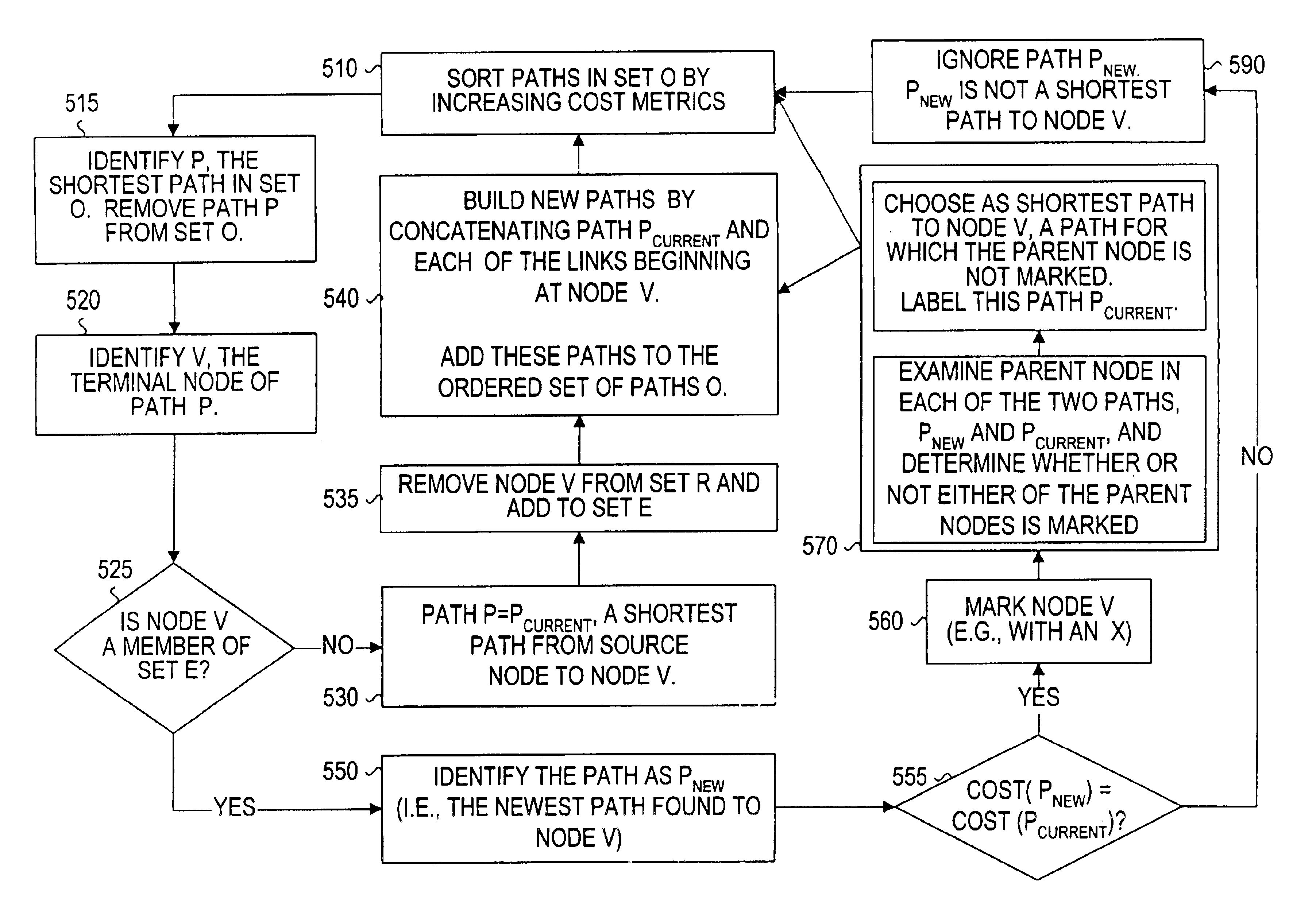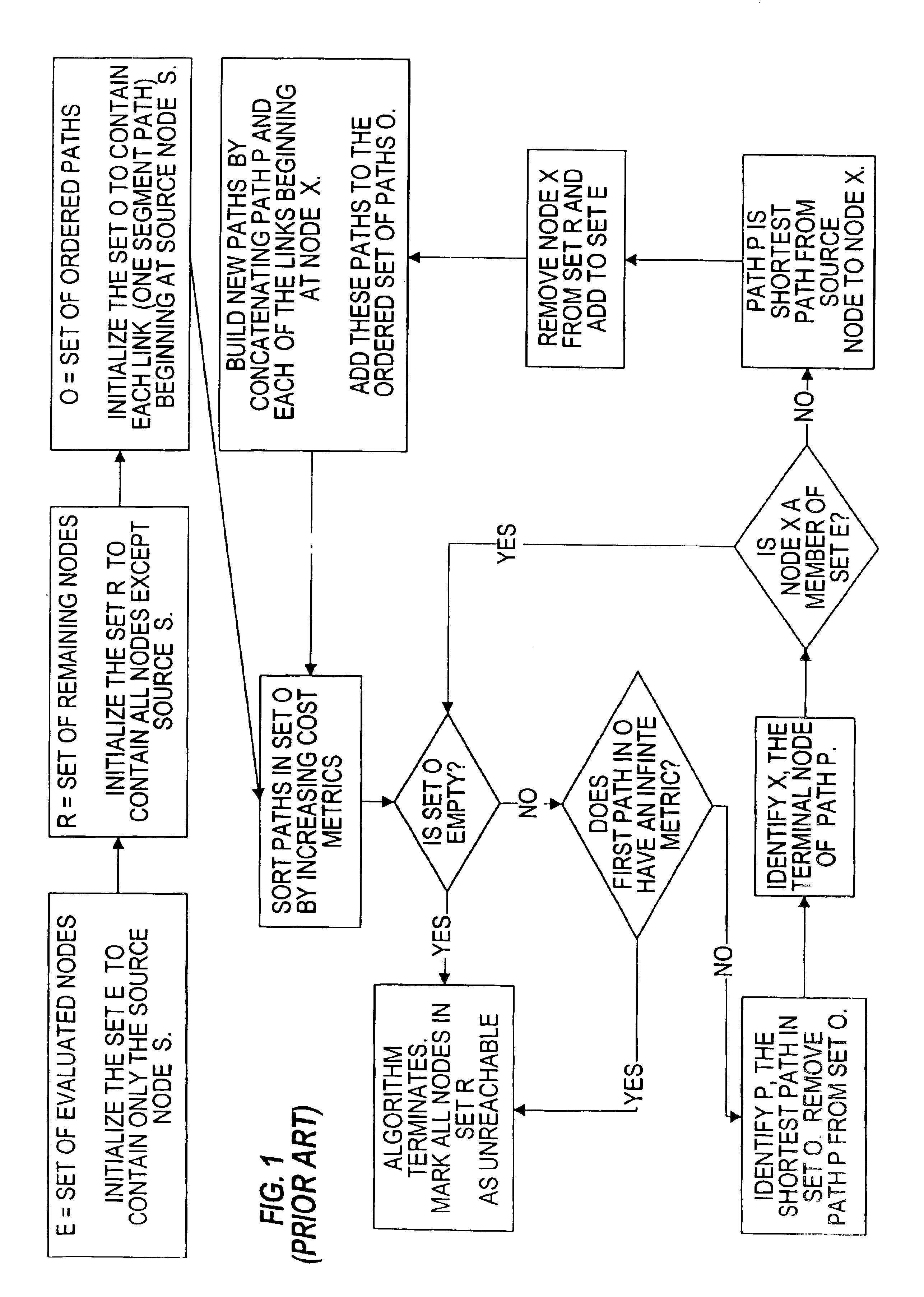Method and apparatus for discovering edge-disjoint shortest path pairs during shortest path tree computation
a shortest path and computation method technology, applied in the field of communication paths, can solve the problems of path itself not being protected, path segments cannot be protected, and the possibility of a link or span failure due to a fiber cut, so as to improve the efficiency of system and computational resources, reduce computational resources required, and improve the effect of efficiency
- Summary
- Abstract
- Description
- Claims
- Application Information
AI Technical Summary
Benefits of technology
Problems solved by technology
Method used
Image
Examples
Embodiment Construction
[0035]In describing a preferred embodiment of the invention illustrated in the drawings, specific terminology will be used for the sake of clarity. However, the invention is not intended to be limited to the specific terms so selected, and it is to be understood that each specific term includes all technical equivalents which operate in a similar manner to accomplish a similar purpose. More specifically, the invention may be implemented on a variety of hardware and software platforms, and is not limited to any particular processor, hardware configuration, operating system, or development language, as will be evident to those skilled in the art.
[0036]Dijkstra's Shortest Path Tree (SPT) algorithm computes a SPT. When a node is visited for the first time, a shortest path to that node has been found and the links which extend from that node are each concatenated onto that path to form new paths and extend the SPT. There may be, however, more than one shortest path to the same node. The ...
PUM
 Login to View More
Login to View More Abstract
Description
Claims
Application Information
 Login to View More
Login to View More - R&D
- Intellectual Property
- Life Sciences
- Materials
- Tech Scout
- Unparalleled Data Quality
- Higher Quality Content
- 60% Fewer Hallucinations
Browse by: Latest US Patents, China's latest patents, Technical Efficacy Thesaurus, Application Domain, Technology Topic, Popular Technical Reports.
© 2025 PatSnap. All rights reserved.Legal|Privacy policy|Modern Slavery Act Transparency Statement|Sitemap|About US| Contact US: help@patsnap.com



